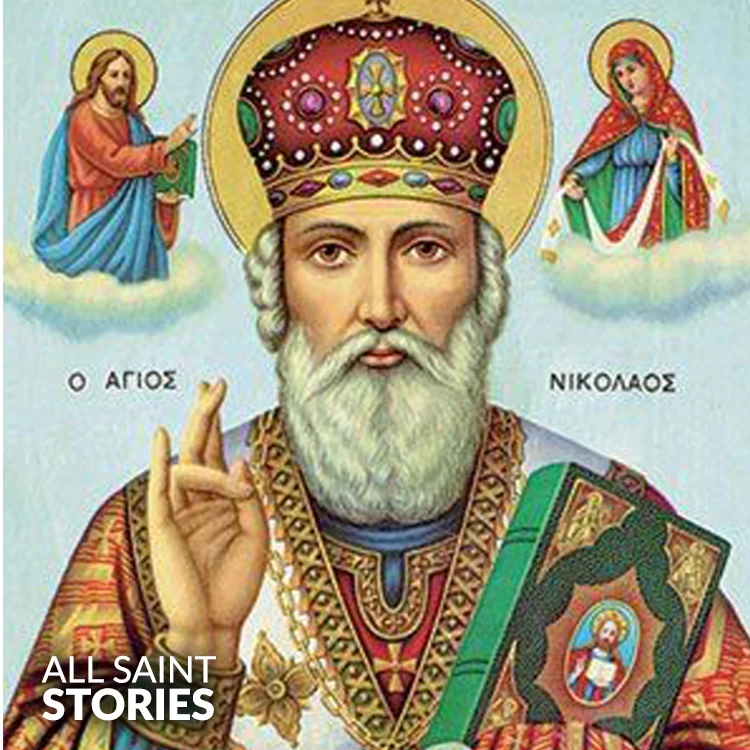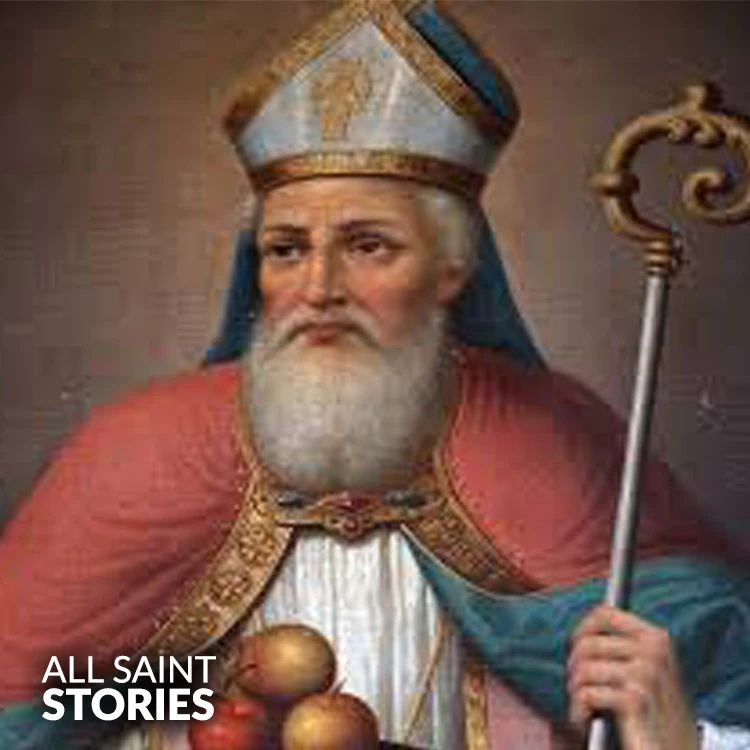"Dear St. Nicholas, Patron of children, sailors, and those in need, Please intercede for us with your loving kindness. Help guide us through life's challenges, And grant us your protection and care. May your example of generosity and faith inspire us always. Amen."
ST. NICHOLAS
ST. NICHOLAS

St. Nicholas was a Christian bishop from Myra in modern-day Turkey, known for his compassion and generosity. He became the patron saint of children, sailors, and gift-giving. His acts of charity, especially anonymously helping the poor, formed the foundation of the modern figure of Santa Claus. His feast day is celebrated on December 6th.
St. Nicholas was born in the 3rd century in Patara, which was part of the ancient Greek city of Myra, located in modern-day Turkey. He came from a wealthy Christian family, and after his parents' death, he used his inheritance to perform acts of charity. He was later ordained as a priest and became the Bishop of Myra, where he became known for his deep faith and kindness.
One of the most famous stories of St. Nicholas is his secret provision of dowries for three poor sisters. Their father was unable to afford a dowry for them, which meant they were likely to be sold into slavery or forced into a life of poverty. St. Nicholas, in an act of selfless charity, secretly placed bags of gold coins in their stockings, saving the sisters from this fate. This act of kindness is part of why he is regarded as the patron saint of children and is also linked to the tradition of gift-giving.
St. Nicholas was known for performing many miracles, such as calming storms and healing the sick. One of his most well-known miracles involved saving sailors who were caught in a violent storm at sea. They called out to him, and he appeared to them, miraculously calming the waters and saving their lives.
In addition to his charitable works, St. Nicholas was a firm defender of the Christian faith. He was known for his participation in the First Council of Nicaea in 325 AD, where he strongly opposed the heretical views of Arianism. His defense of the divinity of Christ led to his imprisonment, but he was later released.
St. Nicholas died on December 6th, 343 AD. His tomb became a place of pilgrimage, and after his death, his reputation for holiness spread rapidly. Over time, the legend of St. Nicholas spread across Europe, and many countries began celebrating his feast day, December 6th. The day became a time for gift-giving, especially to children, in honor of his generosity.
The figure of St. Nicholas evolved over the centuries. In the Netherlands, he became known as Sinterklaas, a figure who would deliver gifts to children on the eve of his feast day. This Dutch tradition was brought to America by settlers in the 18th century and eventually merged with other traditions to create the modern-day Santa Claus.
St. Nicholas's legacy continues to inspire people around the world, reminding them of the importance of kindness, generosity, and selflessness. His feast day is celebrated in many Christian communities, especially in Europe, and he remains one of the most revered saints in Christianity.
Video Not Found
The information on this website is compiled from various trusted sources. While we aim for accuracy, some details may be incomplete or contain discrepancies.
If you notice any errors or have additional information about this saint, please use the form on the left to share your suggestions. Your input helps us improve and maintain reliable content for everyone.
All submissions are reviewed carefully, and your personal details will remain confidential. Thank you for contributing to the accuracy and value of this resource.
Credits & Acknowledgments
- Anudina Visudhar (Malayalam) – Life of Saints for Everyday
by Msgr. Thomas Moothedan, M.A., D.D. - Saint Companions for Each Day
by A. J. M. Mausolfe & J. K. Mausolfe - US Catholic (Faith in Real Life) – Informational articles
- Wikipedia – General reference content and images
- Anastpaul.com – Saint images and reflections
- Pravachaka Sabdam (Malayalam) – Saint-related content and insights
We sincerely thank these authors and platforms for their valuable contributions. If we have unintentionally missed any attribution, please notify us, and we will make the correction promptly.
If you have any suggestion about ST. NICHOLAS
Your suggestion will help improve the information about this saint. Your details will not be disclosed anywhere.
© 2025 Copyright @ www.allsaintstories.com


 English
English
 Italian
Italian
 French
French
 Spanish
Spanish
 Malayalam
Malayalam
 Russian
Russian
 Korean
Korean
 Sinhala
Sinhala
 Japanese
Japanese
 Arabic
Arabic
 Portuguese
Portuguese
 Bantu
Bantu
 Greek
Greek
 German
German
 Dutch
Dutch
 Filipino
Filipino